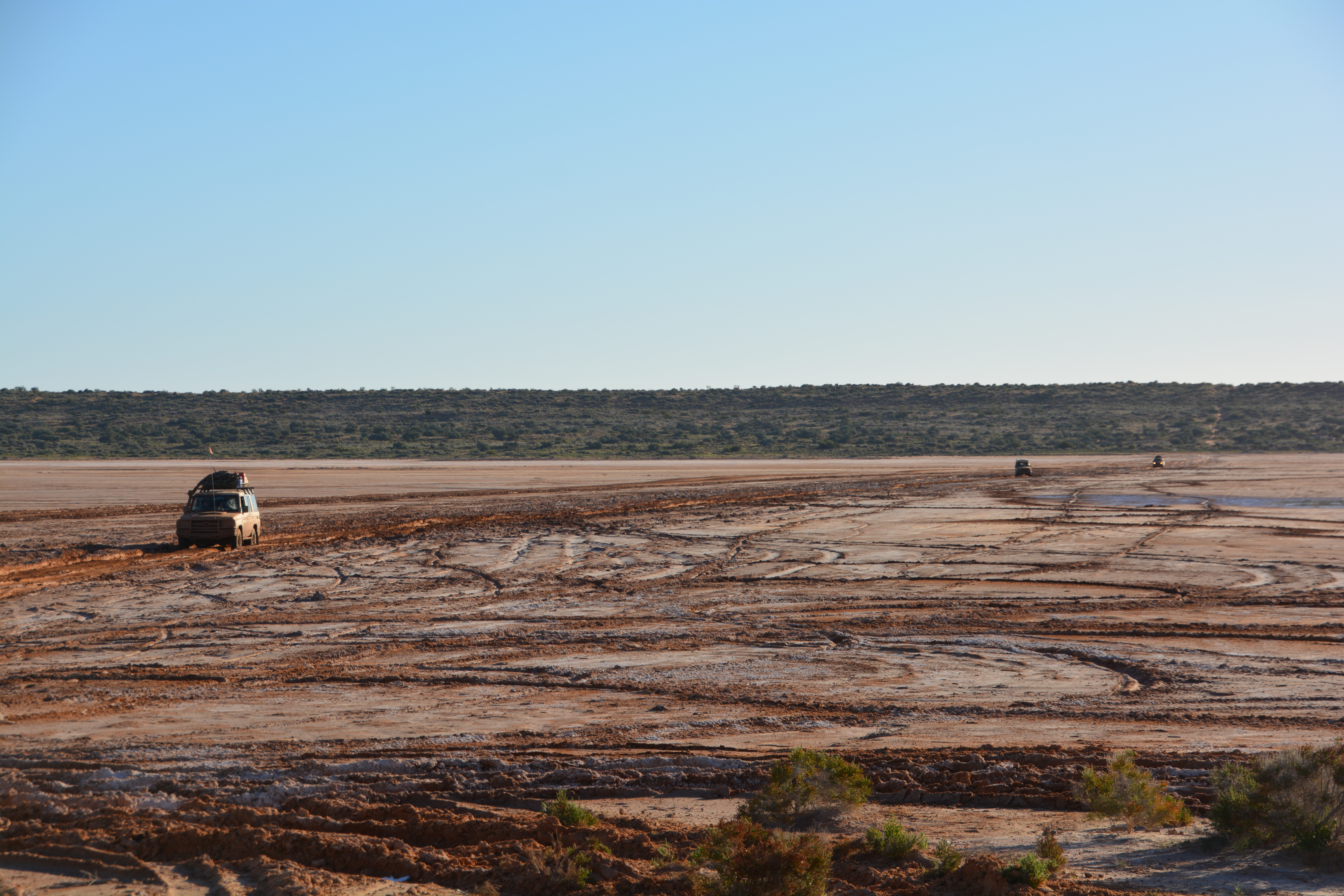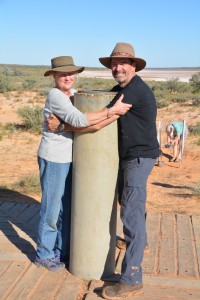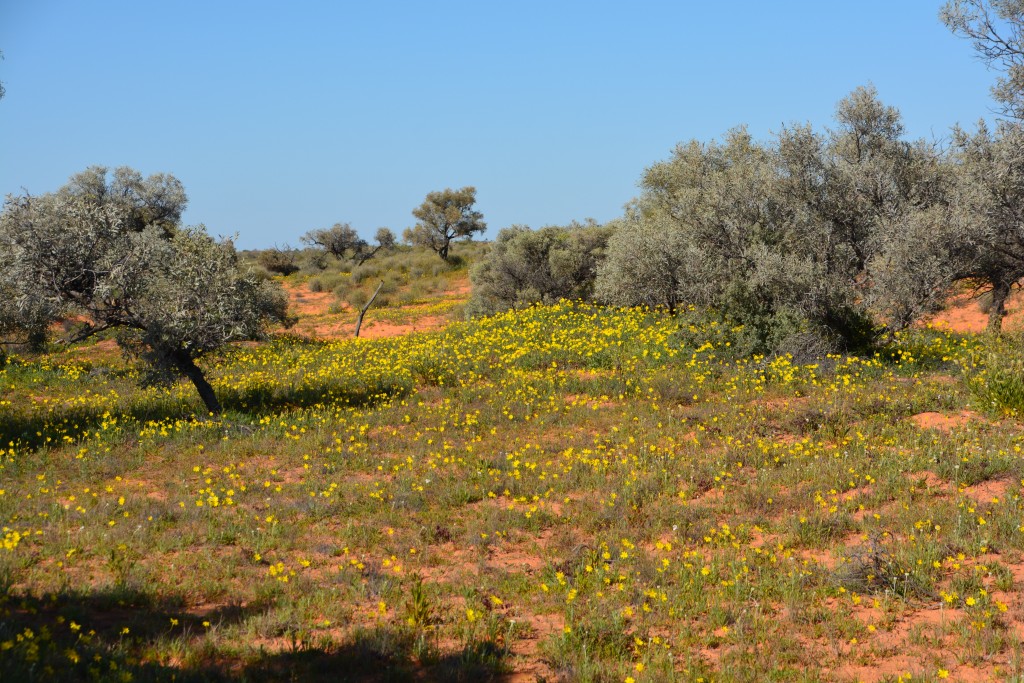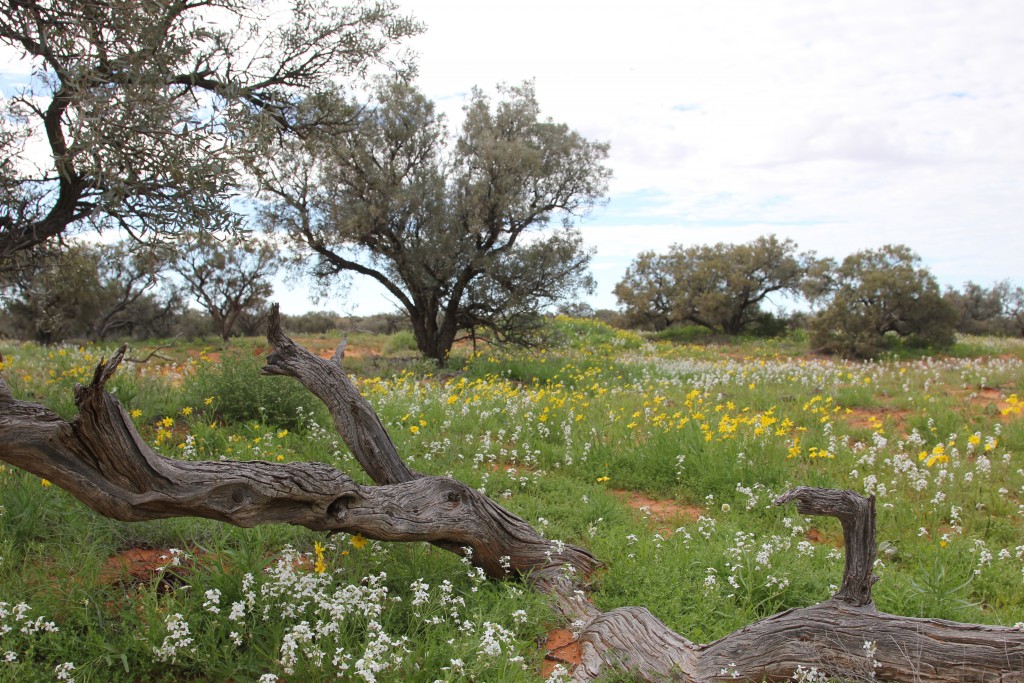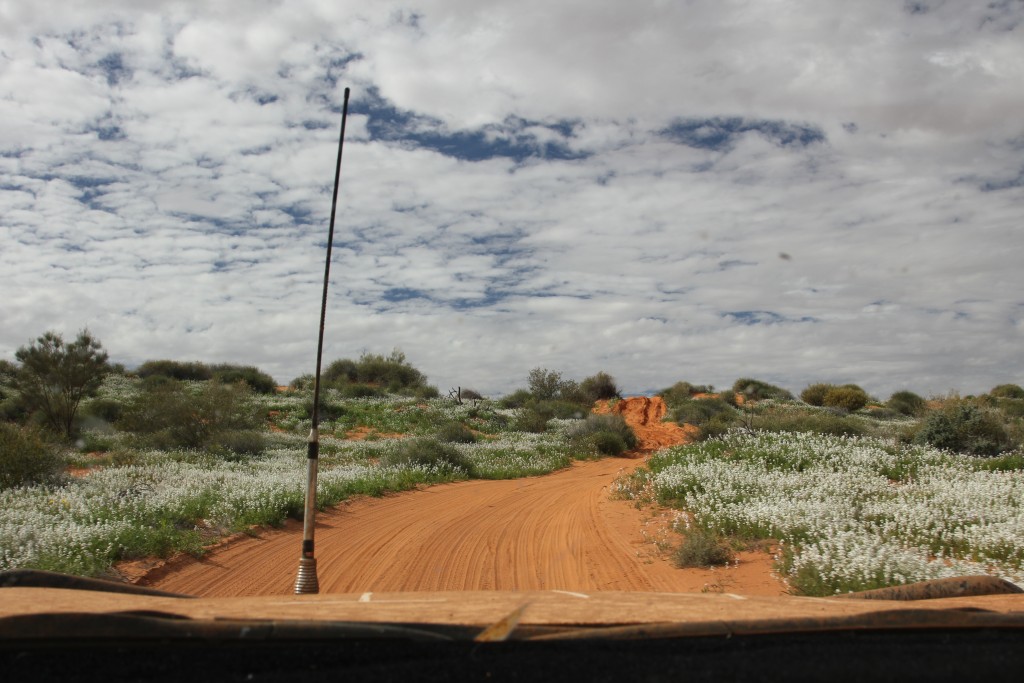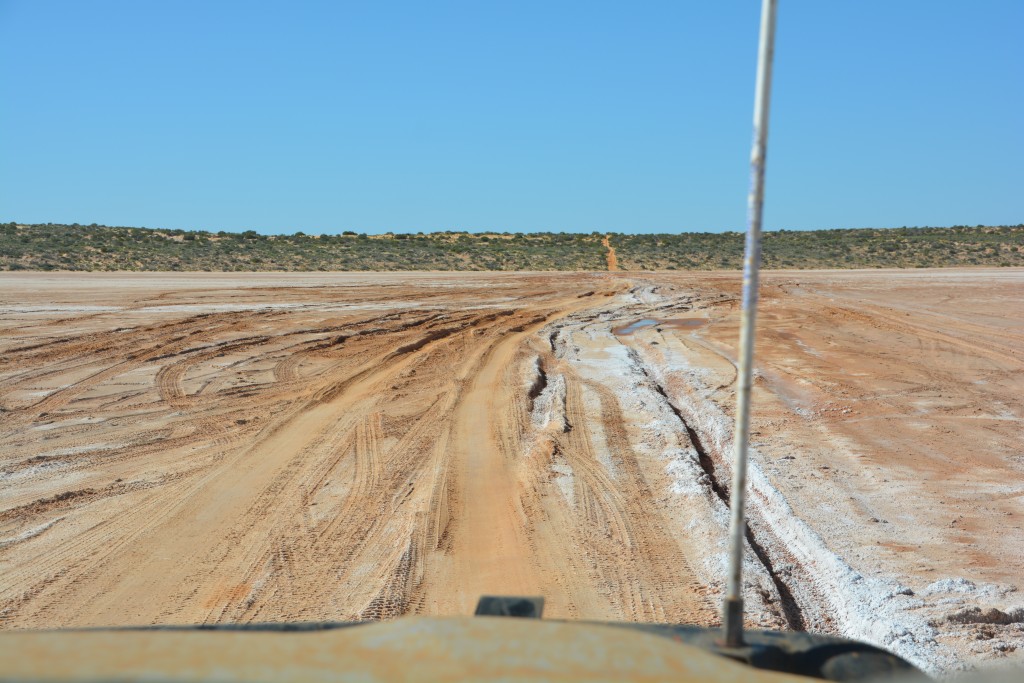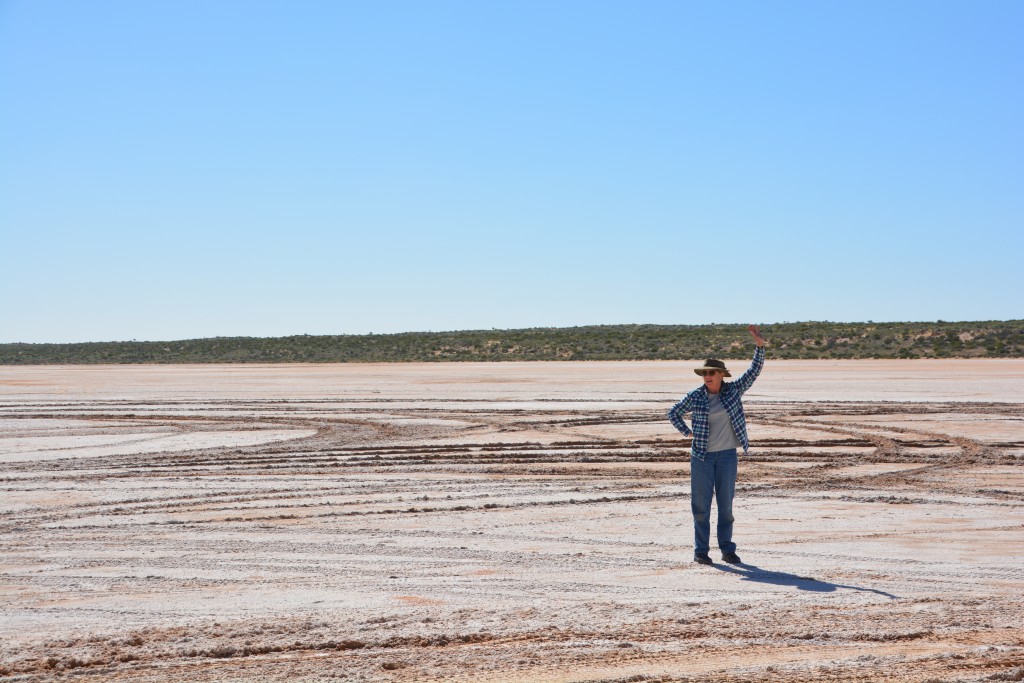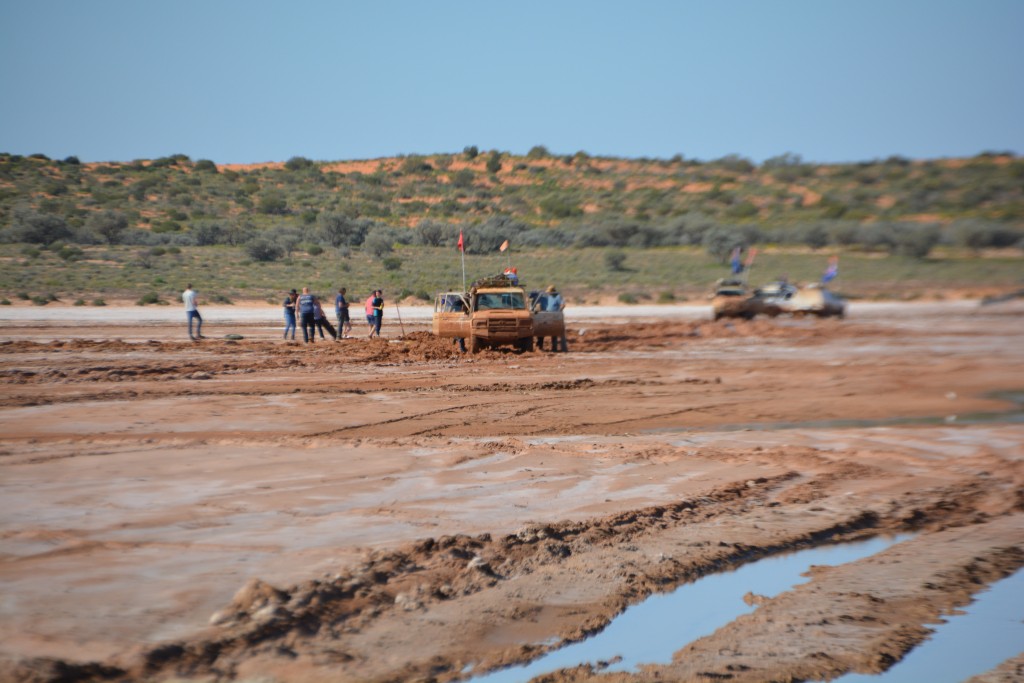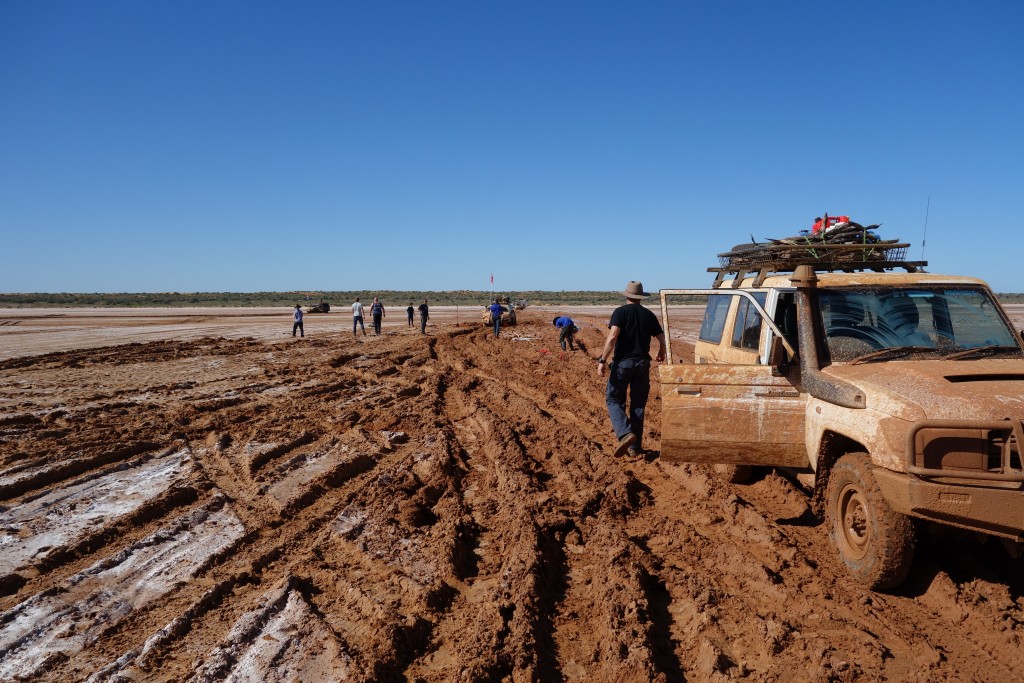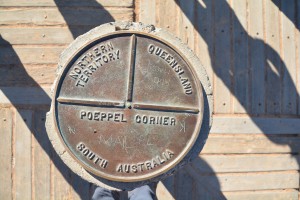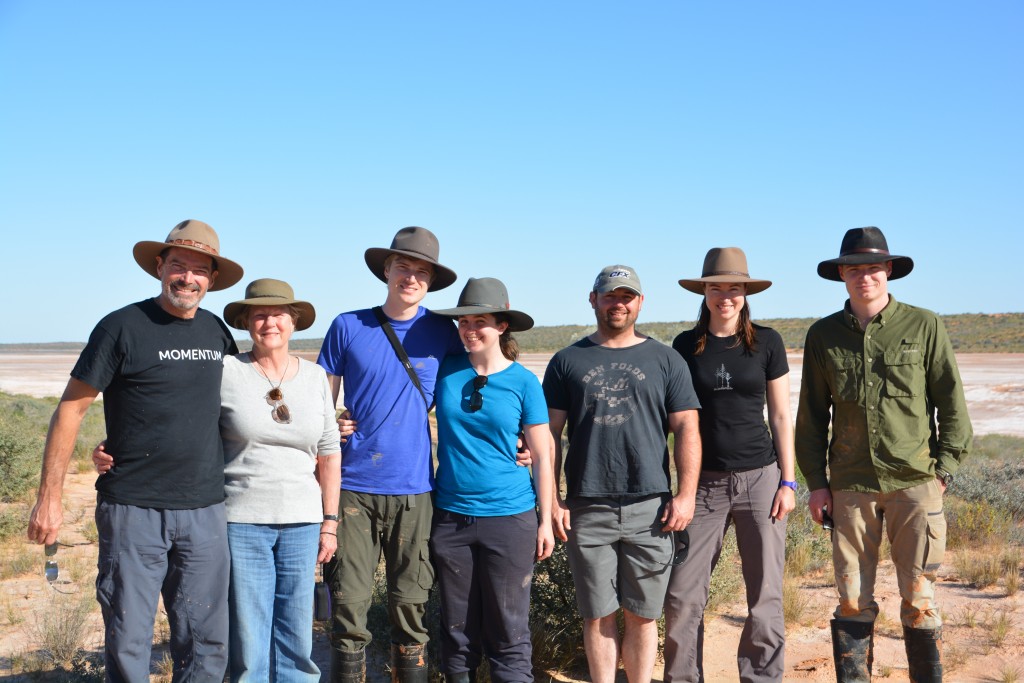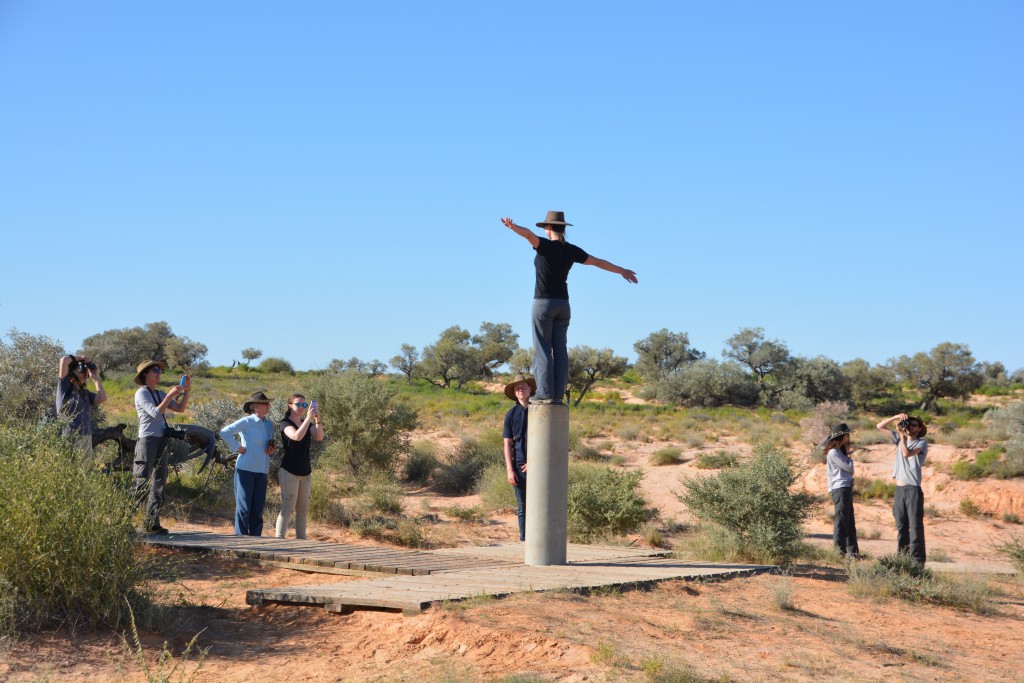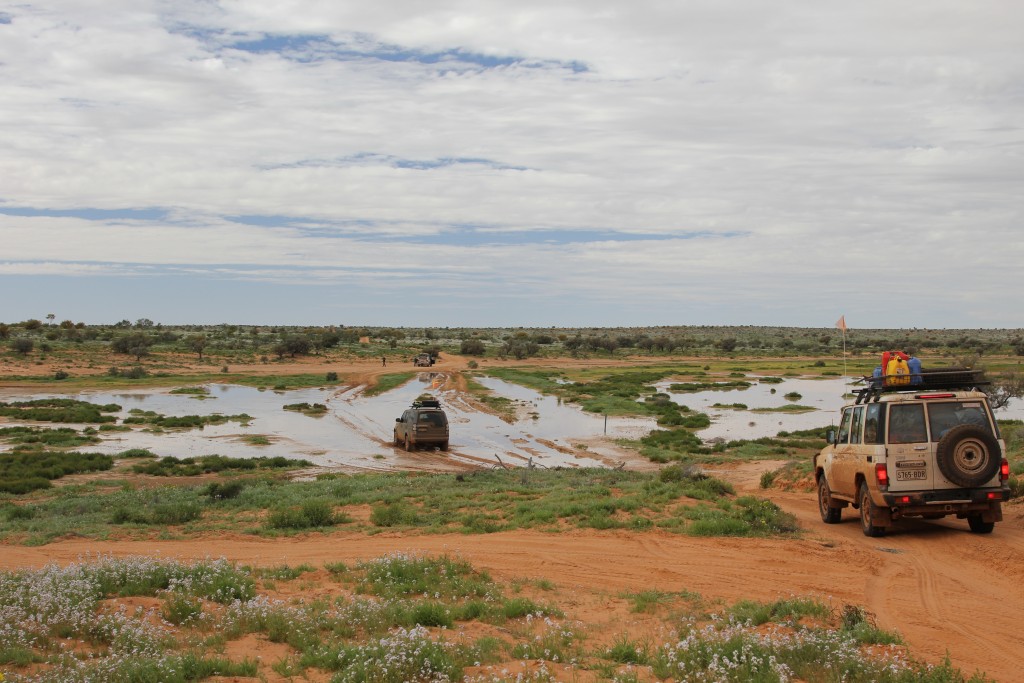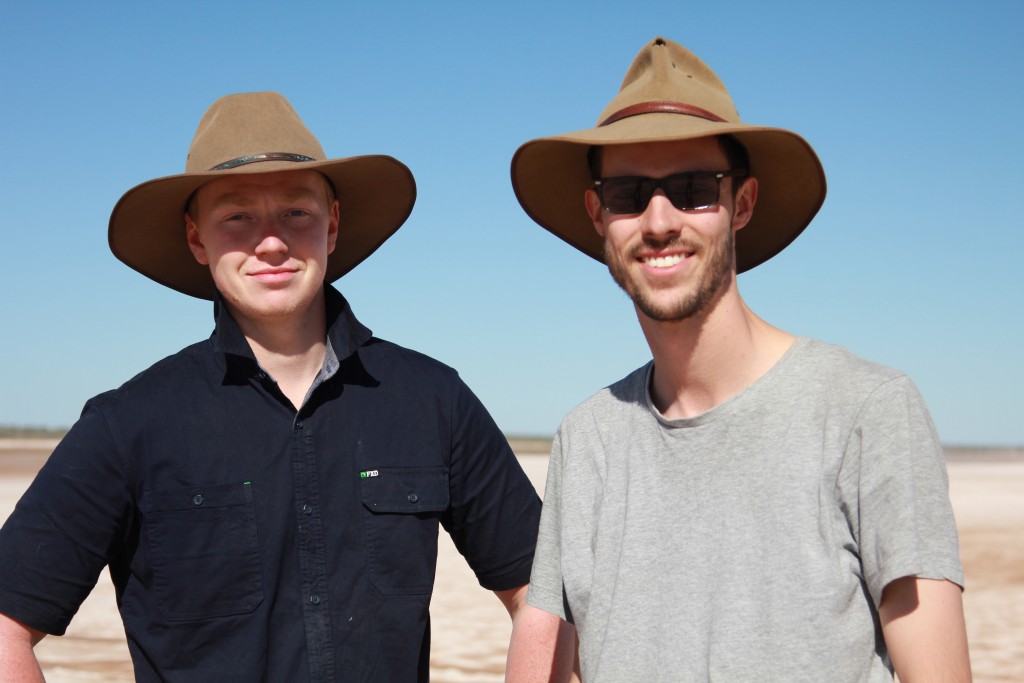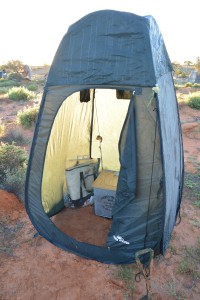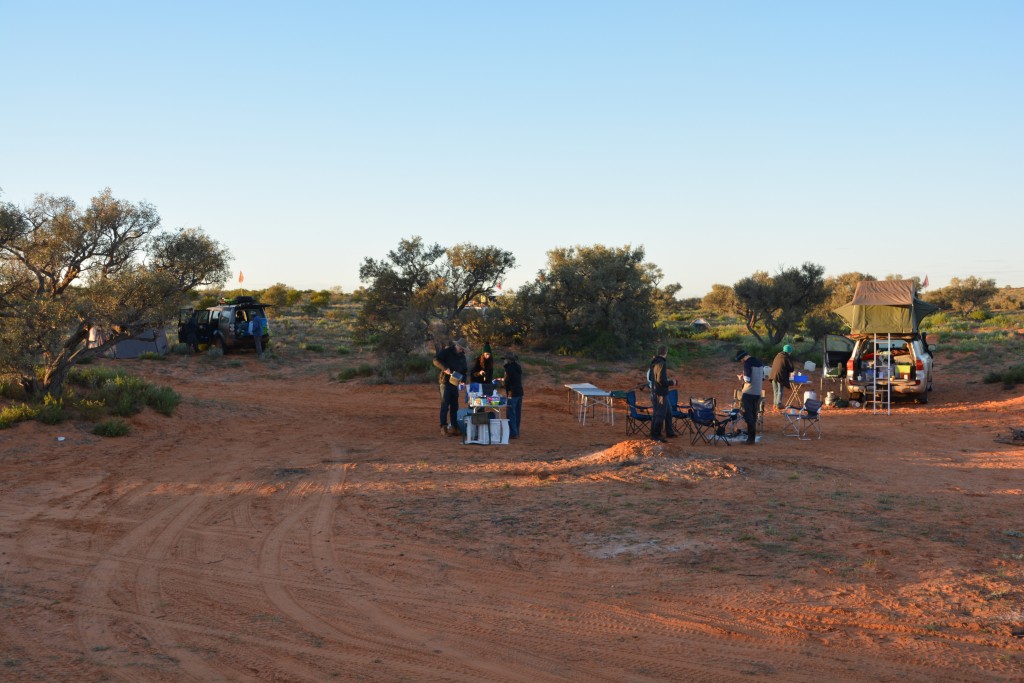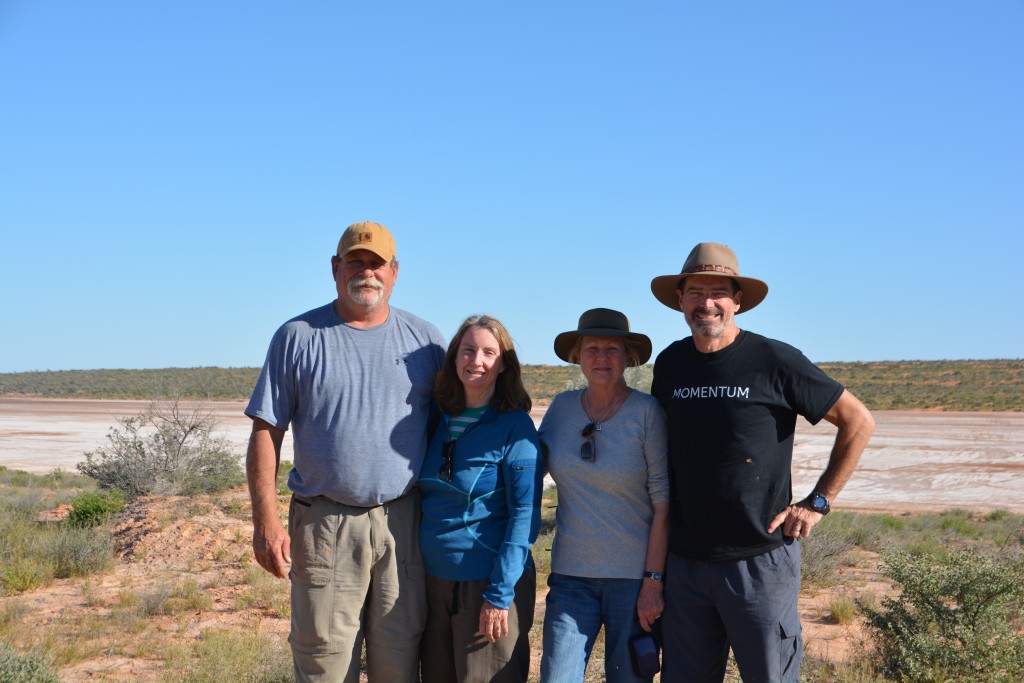Cool Convoy to the rescue
These dry salt lake beds are beautiful to look at but can sometimes be very tricky to cross. They tended to be very rutted from previous vehicles and in many cases their lowest spot still contained water and a lot of very deep sticky mud. We approached each one carefully, often scouting ahead and choosing our path before crossing. When we came up to the edge of a particularly large dry lake we saw a vehicle – which had not shown the same caution – out in the middle hopelessly stuck up to his axles. And reluctantly we spent the next 90 minutes helping him get out.
The day had started much better under beautiful blue skies but as we crawled out of bed the thermometer was only nudging 3 degrees and there was a heavy dew across all our gear. The morning was declared a ‘lady’s drive’ and after we broke camp we headed further east on the French Line towards Poeppel Corner which marks the point where the boundaries of South Australia, Queensland and the Northern Territory meet. Some of the sand dunes were fairly steep on this section and we dropped the air pressure to make it a bit easier.
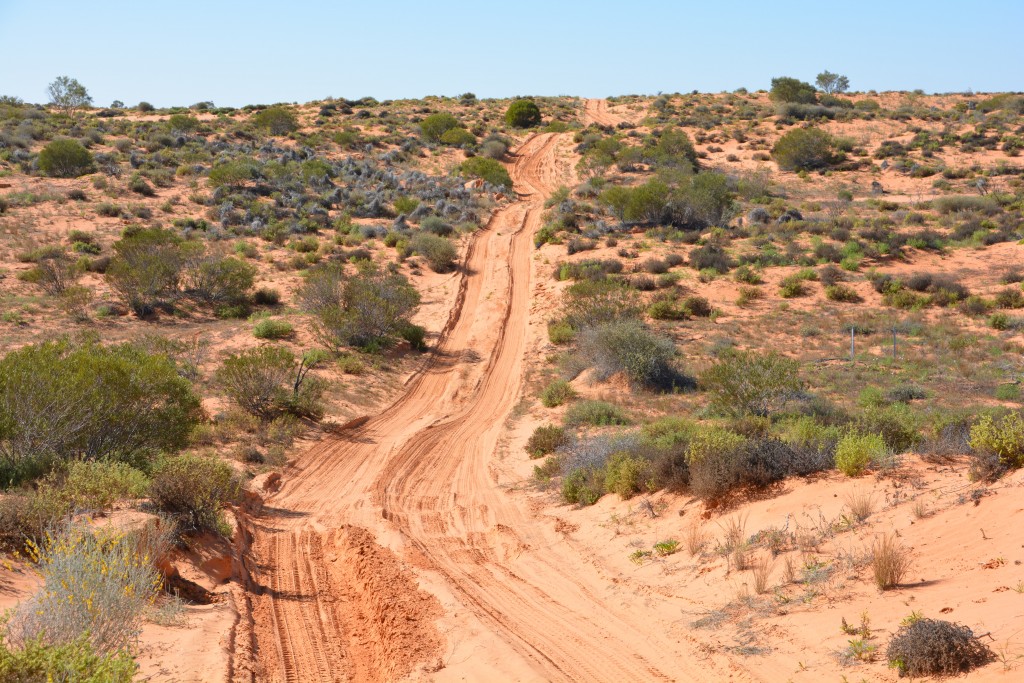
A long steady sand dune requires just the right speed to make it over the top without bouncing too hard on the deep ruts
Our sand dunes this morning were not just their normal green with the red sand underneath. From a distance these dunes took on a vibrant yellow, white or even tinges of purple. The dunes were covered in fields of flowers, waves of them across the sand, as far as we could see, sometimes so thick that the white flowers looked like freshly fallen snow. We stopped many times for photos, each sand dune outdoing the previous one for its bright colours against the blue skies. Absolutely stunning stuff.
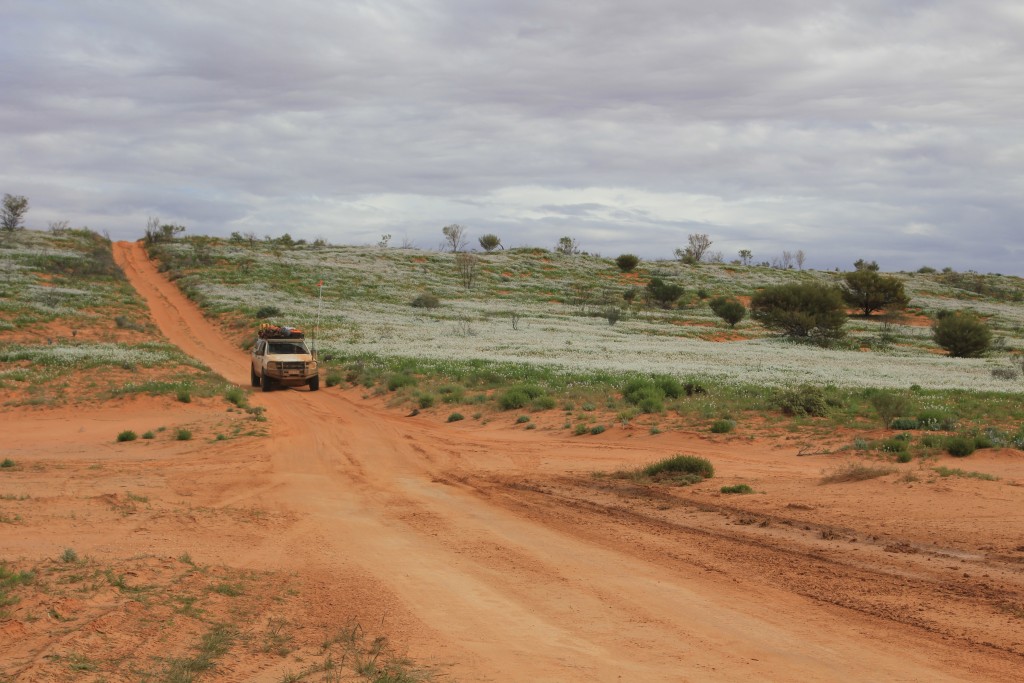
Some fields were covered in yellow, others were blanketed in white – almost like snow. Photo: Jessica
We also came across more and more of these dry salt lakes lying between the sand dunes. They were fun to drive across but often presented challenges with their deep ruts and slippery muddy sections. Some of them were so dodgy to cross that numerous previous vehicles had driven around their edge to avoid any risk of getting bogged and we wisely followed suit.
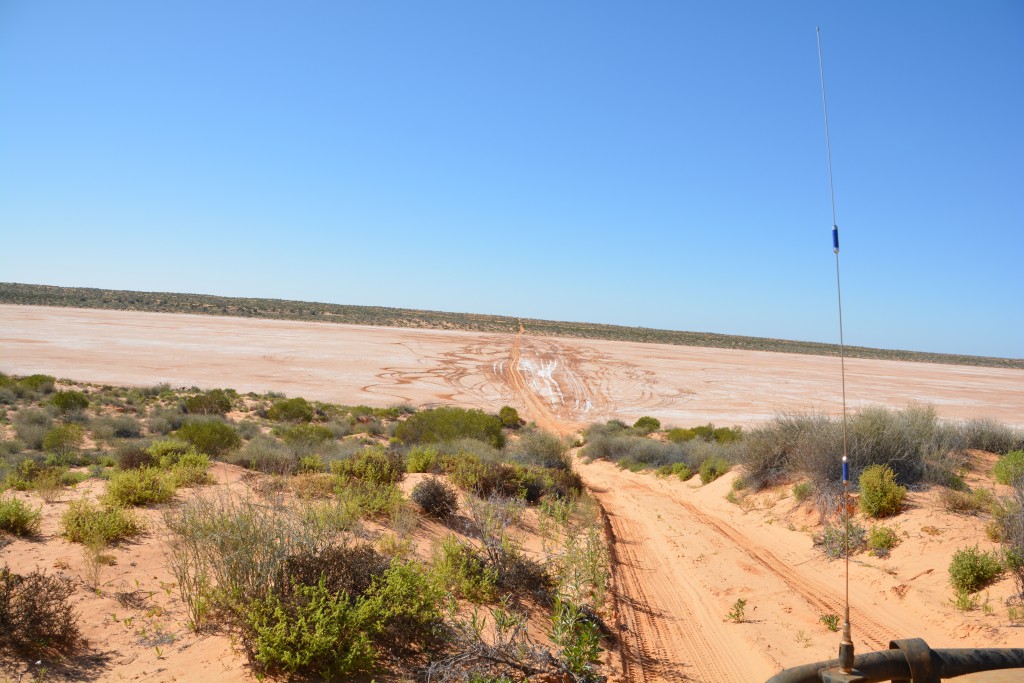
Approaching another dry salt lake – they had to be treated with respect because they were often very soft and muddy
We averaged only about 14 km per hour for the first three hours, finally arriving at Poeppel Lake – a huge dry salty lake bed – near midday. This salt bed was more than a kilometre wide, deeply rutted from past travellers and obviously very boggy in the middle. And this is where we saw the truck stuck in the middle of the lake, hopelessly bogged with his four kids inside. Of course as soon as we crested the dune the radio crackled with a request to help them get out, relying on an unwritten traveller’s creed to help each other in times of need.
But this was slightly different. First of all, this guy had used extremely bad judgement to try this crossing as a single vehicle with only kids inside. Second, we were a group of six vehicles with much wider responsibilities than just helping this guy. A few of us gingerly walked out across the soft mud to look at his predicament and were greeted by him and a few other onlookers drinking beer and leaning on their sole shovel.
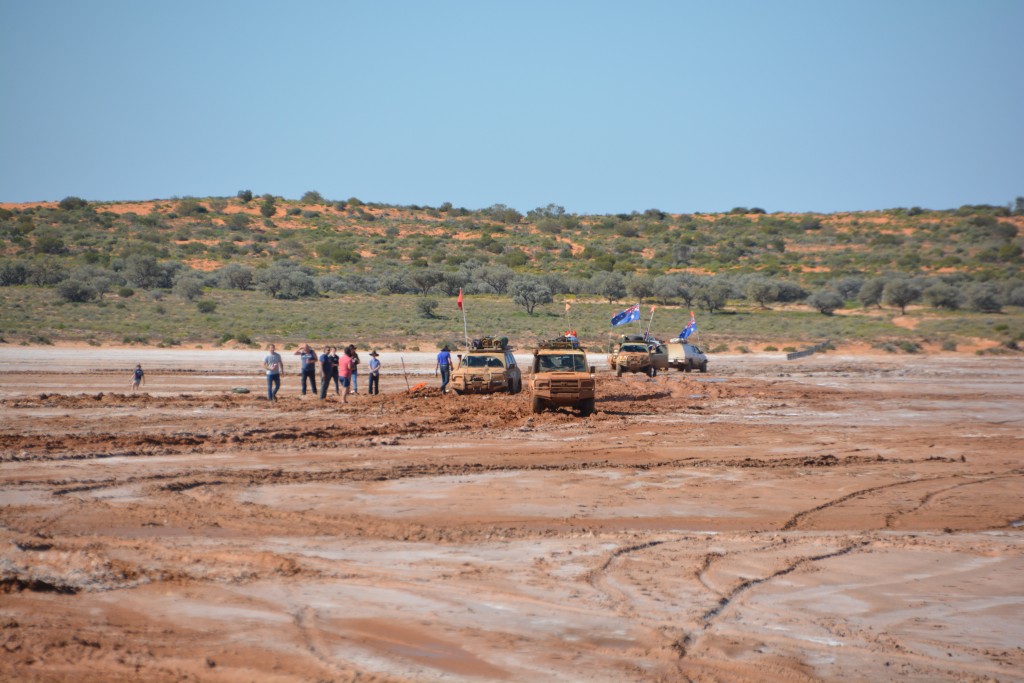
With some trepidation I decided to take out the Land Cruiser 70 Series to try to pull this guy out – here the Cruiser is positioned to hook up to the stuck truck
Reluctantly I agreed to bring one of our tough Land Cruiser 70 Series in and try to pull them out but only for a short while, after which we would have to move on. The ground was very deep and muddy, absolutely no place for a vehicle, but the 70 Series bounced and ploughed and grinded its way into the middle where I was able to turn it around and position it to attach to the sunken truck. My greatest fear was that we would get our truck stuck trying to help this dope so every step we took had to be calculated to avoid that happening.
Numerous attempts with his winch and a series of snatch straps failed, the straps sometimes breaking under the strain. Eventually we got the right combination of straps linking our vehicles, people digging and pushing and the 70 Series pulling at full rev until the truck moved a bit, started rocking and eventually came out. Mission accomplished.
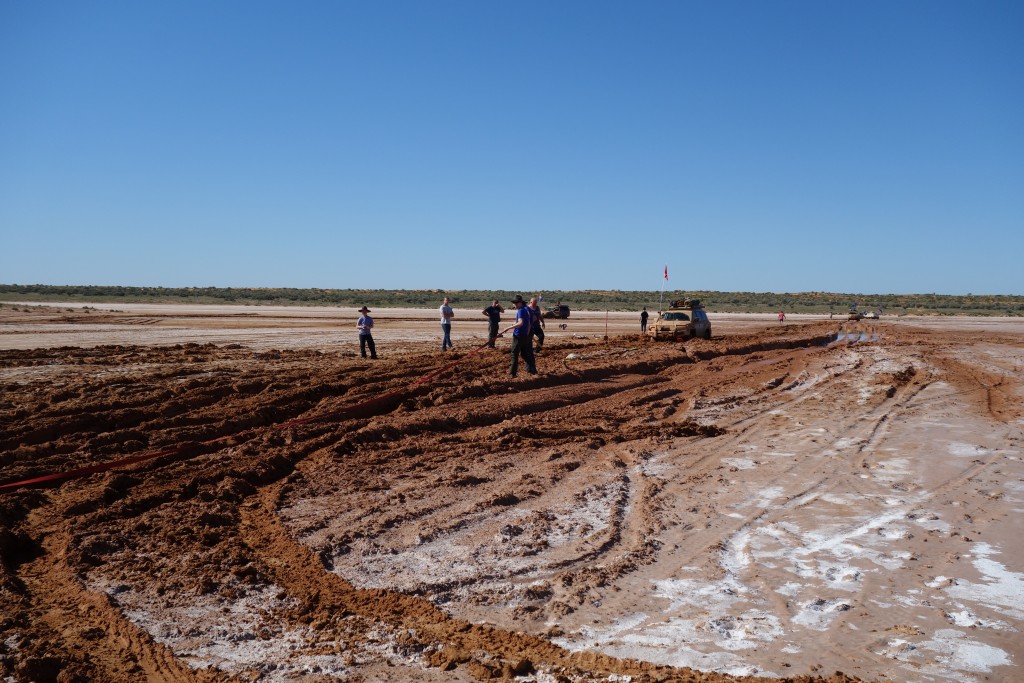
Will is connecting the four snatch straps together and after a few tries we finally pulled this guy out
After a pat on the back from the relieved driver we said our good byes, people and vehicle covered in mud, and power-drove ourselves back to the lake’s edge, bouncing and sliding so much to get out of this mess the truck slid hard sideways to a stop at one stage. We packed up and left as quickly as possible for fear this guy would get stuck again and need more help.
The detour around Poeppel Lake was 18 km long but it gave us a different perspective of this vast dry lake bed and the challenges of Augustus Poeppel who came through here in the mid 1880’s to survey for the first time the exact spot where the boundaries of South Australia, Queensland and the Northern Territory met. He measured the spot to be in the middle of the lake and it wasn’t until many years later that more accurate equipment moved the spot up on the slope above the lake.
It was from this important geographical spot that we stopped in the late afternoon for photos and to admire the sweeping view across the dry salt lake and the sand dunes in the distance. How anyone could have survived out here 130 years ago with the equipment, clothes and supplies they had is absolutely beyond me.
We made our way north to the QAA Line, another one of the numerous tracks crossing the Simpson Desert, and travelled eastward until we crossed the Queensland border. After numerous dry salt lake crossings we found a beautiful place to camp between the dunes and set up for the night. It had been a huge day with beautiful flowers, dramatic dry lake beds, a lot of adventure and some stunning desert scenes but with all that effort we had only covered 96 km.
